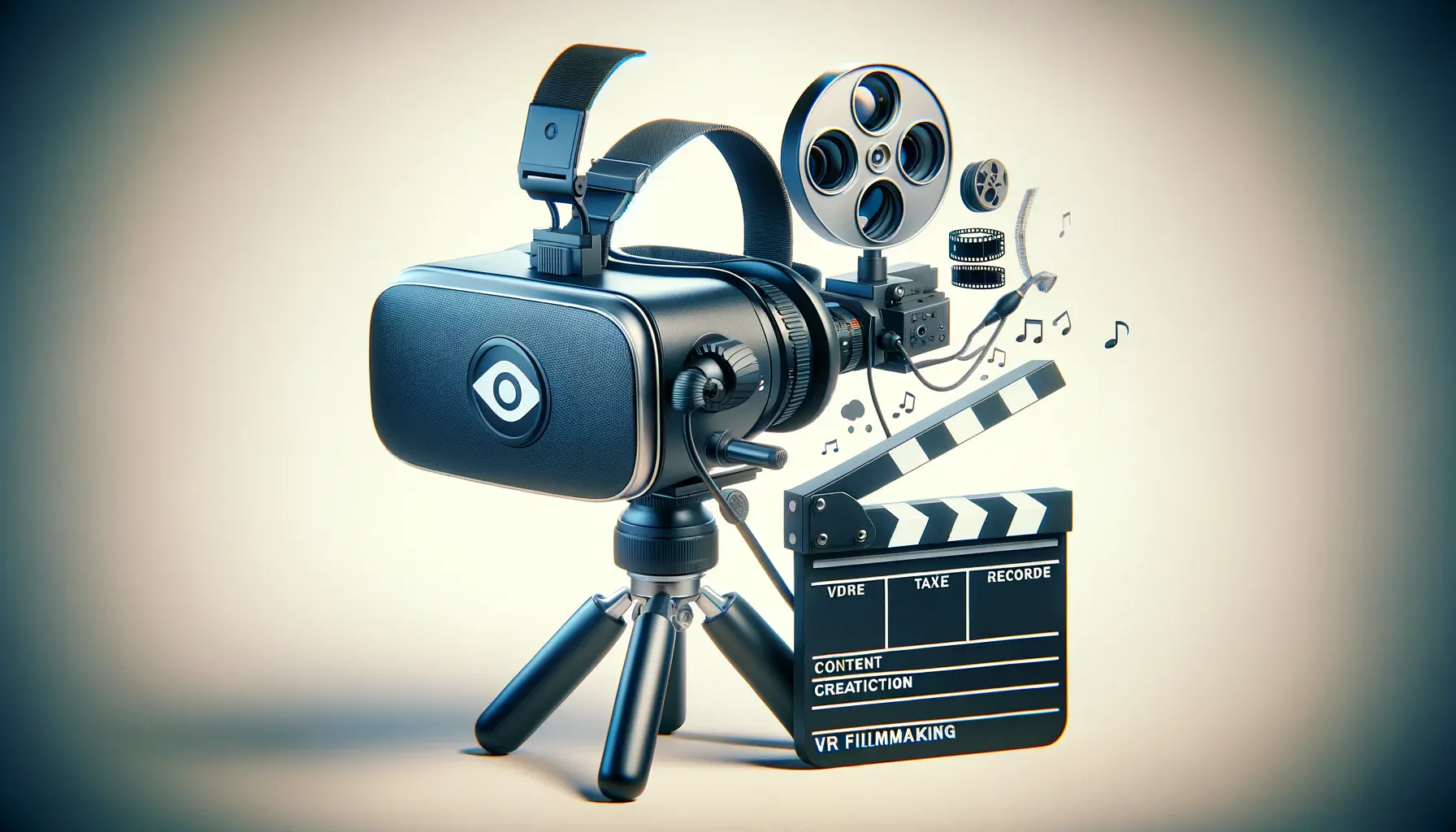The digital landscape is evolving at an unprecedented pace, with innovations in artificial intelligence (AI) reshaping how content is created, distributed, and consumed.
Among these innovations, OpenAI’s Sora stands out as a revolutionary tool, particularly in the realm of video content creation.
Sora, a cutting-edge AI model, has introduced capabilities that were once deemed futuristic, transforming the speed and efficiency of content creation processes.
At the heart of this transformation is the ability to generate high-quality video content from simple text prompts.
This capability not only accelerates the content creation process but also democratizes it, allowing creators with varying levels of expertise to produce visually compelling narratives.
The impact of Sora on the creative industry is profound, offering a glimpse into a future where the barriers to content creation are significantly lowered.
- Sora’s Impact on Content Creation
- Expanding the Horizons of Creativity
- Challenges and Considerations in AI-Driven Content Creation
- Integrating Sora into Professional Workflows
- Future Directions for AI in Content Creation
- Maximizing the Potential of Sora for Various Industries
- Enhancing Personalized Content with Sora
- Embracing the Future of Content Creation with Sora
- FAQs: Navigating the World of Content Creation with Sora
Sora’s Impact on Content Creation
The Mechanism Behind Sora
Sora leverages advanced machine learning algorithms to interpret text prompts and convert them into detailed video sequences.
This process involves a complex interplay of generative AI models that understand context, visual aesthetics, and narrative flow.
By analyzing vast datasets of video content, Sora learns to replicate and innovate on visual storytelling techniques, making it possible to produce videos that are both unique and engaging.
The implications of such technology are vast.
For content creators, Sora offers a tool that can significantly reduce production times, allowing for quicker turnaround without compromising on quality.
This efficiency is particularly valuable in industries where time is of the essence, such as news media and digital marketing.
Revolutionizing Creative Workflows
Sora’s introduction into the creative landscape is akin to the advent of digital editing software in the past century.
Just as tools like Adobe Photoshop and Premiere Pro revolutionized graphic design and video editing, Sora is set to redefine content creation workflows.
Creators can now iterate on ideas and produce multiple versions of a video in the time it would have taken to storyboard a single concept traditionally.
This shift not only enhances productivity but also encourages experimentation.
With the ability to quickly generate video content from text, creators are free to explore diverse narratives and visual styles without the fear of resource-intensive revisions.
This could lead to a surge in creative diversity, with more voices and visions being brought to life through video.
Sora’s AI-driven content creation marks a significant leap towards a future where anyone can bring their stories to life, regardless of their technical skills or access to expensive production resources.
Expanding the Horizons of Creativity
The advent of Sora by OpenAI is not just a technical milestone; it’s a catalyst for a broader cultural shift in content creation.
By simplifying the video production process, Sora empowers a wider range of individuals to express their creativity and share their stories.
This democratization of content creation has the potential to diversify the types of stories told and the perspectives shared, enriching the digital media landscape with fresh and varied voices.
The Democratization of Video Production
Before the era of AI-driven tools like Sora, high-quality video production was often gated by two major barriers: technical skill and financial resources.
Sora’s intuitive text-to-video conversion process significantly lowers these barriers, enabling individuals without formal training in video production or access to expensive equipment to create compelling visual content.
This democratization effect can be broken down into several key areas:
- Accessibility: By requiring nothing more than a descriptive text prompt, Sora makes video production accessible to a broader audience, including those with disabilities that may have previously limited their ability to engage in traditional video creation.
- Inclusivity: With the ability to generate content from text, creators from diverse linguistic, cultural, and socio-economic backgrounds can produce video content that reflects their unique perspectives and experiences.
- Equality: By leveling the playing field, Sora ensures that the quality of content is not dictated by the creator’s financial capacity to afford high-end production tools or hire professional teams.
Enhancing Creative Expression
The implications of Sora’s technology extend beyond logistical benefits, touching the very core of creative expression.
With the constraints of traditional video production removed, creators are free to explore and experiment with their storytelling in ways that were previously unimaginable.
This newfound freedom manifests in several impactful ways:
- Storytelling Diversity: Creators can experiment with a wide range of genres, styles, and narratives, including those that may have been too resource-intensive to consider previously.
- Visual Experimentation: The ease of generating visually stunning and complex scenes encourages creators to push the boundaries of visual storytelling, exploring new aesthetics and visual narratives.
- Iterative Creativity: The speed at which Sora can produce content allows creators to iterate on their ideas rapidly, refining their stories and visuals based on immediate feedback and insights.
The transformative potential of Sora in content creation lies not just in making video production faster and more accessible but in fundamentally changing how we conceive and engage with the creative process itself.
Challenges and Considerations in AI-Driven Content Creation
While Sora represents a significant leap forward in content creation technology, its advent also raises important questions and challenges.
As with any disruptive technology, the integration of AI into creative workflows necessitates a careful consideration of ethical, legal, and quality concerns.
Addressing these challenges is crucial for ensuring that the benefits of AI-driven content creation are realized without compromising artistic integrity or leading to unintended negative consequences.
The rapid development and adoption of AI tools like Sora have outpaced the establishment of comprehensive ethical guidelines and legal frameworks.
This gap presents several challenges that need to be addressed:
- Authenticity and Originality: The ease with which AI can generate content raises concerns about the dilution of originality in creative works. Distinguishing between human-created and AI-generated content becomes increasingly difficult, potentially impacting the value placed on human creativity.
- Intellectual Property Rights: AI-generated content complicates the traditional understanding of copyright and ownership. Determining the rights to content that is created by AI, but based on human input, presents a legal gray area that needs clarification.
- Ethical Use of AI: The potential for AI tools to be used in creating misleading or harmful content, such as deepfakes, necessitates the development of ethical guidelines and safeguards to prevent misuse.
Addressing Quality Concerns
Ensuring the quality of AI-generated content is another critical challenge.
While Sora can produce content at an unprecedented speed, maintaining high standards of quality and artistic merit is essential for the tool to be genuinely transformative.
This involves:
- Technical Refinement: Continuously improving the AI’s understanding of complex narratives, visual aesthetics, and cultural nuances to ensure that the generated content meets high-quality standards.
- Creator Oversight: Encouraging a collaborative approach where human creators play a vital role in guiding the AI, ensuring that the final content aligns with their creative vision and ethical standards.
- Feedback Mechanisms: Implementing robust feedback loops that allow creators to refine and adjust the AI’s output, ensuring that the technology evolves in response to real-world use and creative demands.
Navigating the challenges of AI-driven content creation requires a collaborative effort between technologists, creators, legal experts, and ethicists to ensure that tools like Sora enhance rather than diminish the creative landscape.
Integrating Sora into Professional Workflows
The integration of Sora into professional content creation workflows heralds a new era of efficiency and innovation.
However, to fully leverage its potential, creators and organizations must thoughtfully incorporate this tool into their existing processes.
This integration involves understanding Sora’s capabilities, rethinking traditional roles, and embracing new collaborative models between AI and human creativity.
Successfully integrating Sora into professional workflows requires a multifaceted approach:
- Training and Education: Educating creative teams on the capabilities and limitations of Sora is essential. This includes training on how to effectively communicate with the AI through text prompts and understanding the types of projects best suited for AI-assisted creation.
- Workflow Redesign: Organizations may need to redesign their content creation workflows to accommodate AI-driven processes. This could involve establishing new roles focused on AI interaction or adapting project timelines to include AI-generated content iterations.
- Quality Control: Implementing quality control measures is crucial to ensure that AI-generated content aligns with brand standards and creative goals. This might include regular reviews of AI-generated content by creative directors or incorporating feedback loops to refine AI outputs.
Collaboration Between AI and Human Creativity
The most successful use of Sora will likely come from a collaborative approach that leverages the strengths of both AI and human creativity.
This collaboration can take several forms:
- AI as a Creative Partner: Viewing Sora as a creative partner that can offer new perspectives and ideas, rather than just a tool for automating content production.
- Human Oversight: Ensuring that human creators maintain oversight over the creative process, guiding the AI to achieve the desired artistic vision and making critical creative decisions.
- Iterative Creation: Utilizing Sora’s rapid content generation capabilities to create multiple iterations of a concept, allowing creative teams to explore a wider range of ideas and refine their vision through an iterative process.
The integration of Sora into professional workflows represents an opportunity to redefine content creation, blending AI’s computational power with human creativity to push the boundaries of what is possible.
Future Directions for AI in Content Creation
The development and adoption of Sora by OpenAI signify just the beginning of a transformative journey in content creation.
As AI technologies continue to evolve, the future of content creation looks poised for further innovation, with AI playing an increasingly central role.
This evolution will likely be characterized by more sophisticated AI models, deeper integration into creative processes, and an ongoing dialogue about the ethical implications of AI-generated content.
Looking ahead, several key trends are likely to shape the future of AI in content creation:
- Advancements in AI Capabilities: Future iterations of Sora and similar technologies will likely offer even more advanced capabilities, including improved understanding of complex narratives, enhanced visual quality, and more intuitive interfaces for interacting with the AI.
- Seamless Integration: As AI becomes more integrated into content creation tools and platforms, creators will find it increasingly seamless to incorporate AI-generated content into their projects, blurring the lines between traditional and AI-assisted creation.
- Collaborative AI Models: The development of collaborative AI models that can work alongside human creators in real-time, offering suggestions, generating content on the fly, and learning from feedback, will further enhance the creative process.
Addressing Ethical and Societal Impacts
As AI technologies like Sora become more prevalent in content creation, addressing their ethical and societal impacts will be crucial.
This includes ensuring transparency in AI-generated content, protecting intellectual property rights, and preventing the misuse of AI for creating misleading or harmful content.
The content creation community, along with policymakers and technologists, will need to engage in ongoing discussions to navigate these challenges effectively.
Moreover, the democratization of content creation through AI also raises questions about the future role of human creativity.
Ensuring that AI serves to augment rather than replace human creativity will be essential for fostering a content creation ecosystem that values and celebrates human artistic expression.
The future of AI in content creation is not just about technological innovation but also about shaping a future where technology enhances human creativity, enriches our cultural landscape, and adheres to ethical standards that protect and promote societal well-being.
Maximizing the Potential of Sora for Various Industries
The versatility of Sora extends its utility beyond the traditional realms of media and entertainment, offering transformative potential for various industries.
From education and training to marketing and advertising, Sora’s ability to rapidly generate high-quality video content can revolutionize how information is conveyed, stories are told, and products are marketed.
Understanding how to harness Sora effectively across different sectors can unlock new opportunities for innovation and engagement.
Exploring the impact of Sora across various industries reveals its broad applicability:
- Education and Training: In the education sector, Sora can create immersive and engaging learning materials, making complex subjects more accessible and enhancing the learning experience for students of all ages.
- Marketing and Advertising: For marketers, Sora offers the ability to produce captivating video content at scale, enabling personalized advertising campaigns and dynamic storytelling that can adapt to changing consumer preferences.
- Entertainment: In entertainment, Sora can assist in the rapid prototyping of film and game concepts, allowing creators to visualize scenes and characters before committing to full-scale production.
- Journalism and Reporting: Journalists can use Sora to create visualizations that accompany news stories, making complex issues more understandable and engaging for the audience.
Strategies for Industry Adoption
To maximize the benefits of Sora, industries should consider several strategies for adoption:
- Customization and Specialization: Tailoring Sora’s capabilities to meet the specific needs of an industry can enhance its effectiveness. This might involve training the AI on industry-specific datasets or developing custom interfaces that simplify the creation process for domain experts.
- Collaboration with AI Developers: Engaging in partnerships with AI developers can help industries influence the direction of future AI developments, ensuring that emerging tools continue to meet their evolving needs.
- Innovation in Content Strategy: Industries should rethink their content strategies to take full advantage of AI-generated content, exploring new formats and narratives that were previously impractical or cost-prohibitive.
Sora’s potential to transform content creation extends across industries, offering opportunities to enhance communication, storytelling, and engagement through the power of AI-driven video content.
Enhancing Personalized Content with Sora
In an era where personalized content reigns supreme, Sora’s capabilities offer unprecedented opportunities to tailor video content to individual preferences, behaviors, and interests.
This personalization can significantly enhance user engagement, satisfaction, and loyalty across various platforms and services.
By leveraging Sora, creators and businesses can deliver highly customized content experiences that resonate deeply with their audience.
Personalization through Sora can be achieved in several innovative ways:
- User-Driven Content Creation: Allowing users to input their own text prompts to generate personalized video content can create unique and engaging experiences. This approach can be particularly effective in educational platforms, gaming, and interactive marketing campaigns.
- Dynamic Content Adaptation: Sora can be used to adapt content dynamically based on user interactions, preferences, and feedback. For example, video narratives could evolve in real-time based on choices made by the viewer, offering a highly personalized storytelling experience.
- Targeted Marketing Messages: In the realm of advertising, Sora enables the creation of customized marketing videos that speak directly to the interests and needs of different audience segments, increasing the effectiveness of marketing campaigns.
Leveraging Data for Personalization
To maximize the impact of personalized content, integrating Sora with data analytics tools and customer relationship management (CRM) systems can provide a powerful combination.
By analyzing user data, creators can identify trends, preferences, and behaviors that inform the content creation process, enabling Sora to generate video content that is highly relevant and engaging for each individual.
This integration requires careful consideration of privacy and data protection standards to ensure that personalization efforts are conducted ethically and transparently.
By respecting user privacy and leveraging data responsibly, creators and businesses can build trust and foster stronger relationships with their audience.
Assuming that AI-generated content alone can fully replace human creativity is a misconception. Instead, the most effective use of tools like Sora lies in their ability to augment and enhance human creativity, offering new possibilities for personalized and engaging content.
Embracing the Future of Content Creation with Sora
The journey through the capabilities, implications, and potential of Sora reveals a future where the speed of content creation is not just a matter of efficiency but a transformative force in the creative landscape.
Sora, by OpenAI, stands at the forefront of this revolution, offering tools that significantly enhance the ability of creators to produce video content that is rich, engaging, and deeply personalized.
As we have explored, the impact of Sora extends across various industries, democratizing content creation and opening new avenues for storytelling and engagement.
The Path Forward
As we look to the future, the integration of Sora into content creation workflows presents both opportunities and challenges.
The potential for Sora to enhance creative expression, streamline production processes, and create more personalized content experiences is immense.
However, realizing this potential will require thoughtful consideration of ethical, legal, and quality standards to ensure that AI-driven content creation enriches the digital media landscape without compromising the integrity and value of human creativity.
Key Takeaways for Creators and Industries
- Embrace AI as a tool for augmenting human creativity, not replacing it.
- Invest in training and resources to leverage Sora effectively within your workflows.
- Engage in ongoing dialogue about the ethical use of AI in content creation to navigate challenges responsibly.
- Explore new models of storytelling and engagement that Sora’s capabilities make possible.
In conclusion, the speed of content creation with Sora heralds a new era of possibilities for creators, businesses, and educators alike.
By embracing these tools, we can unlock unprecedented levels of creativity and engagement, shaping a future where the stories we tell and the content we create are more diverse, dynamic, and impactful than ever before.
The journey with Sora is just beginning, and its full potential is limited only by our imagination and our commitment to navigating the future of content creation thoughtfully and responsibly.
FAQs: Navigating the World of Content Creation with Sora
Discover the most common inquiries about Sora, OpenAI’s revolutionary tool for transforming text into video, and how it’s reshaping content creation.
Sora is an AI model developed by OpenAI capable of generating realistic and imaginative video content from text prompts.
Using advanced AI algorithms, Sora interprets text prompts to create detailed video sequences that match the described scenarios.
Currently, Sora’s access is limited to select users, including experts and creatives, for testing and feedback purposes.
Yes, Sora can generate personalized videos based on specific text descriptions, offering unique content tailored to individual preferences.
Education, marketing, entertainment, and journalism are among the industries that can significantly benefit from Sora’s capabilities.
Sora streamlines content creation, allowing for rapid prototyping, iterative design, and the exploration of diverse narratives and visual styles.
Challenges include navigating copyright and ownership issues, ensuring content quality, and addressing ethical concerns around AI-generated content.
The future points towards more sophisticated AI models, deeper integration into creative processes, and ongoing discussions on ethical AI use.











